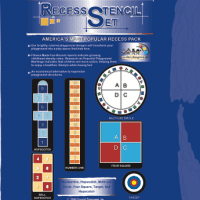
A playground designed for learning
An ever constant mantra in teaching is “what is the learning objective?” Is your playground a place designed for learning? When I was a principal, I remember an experience while observing a classroom of 3rd graders. Students were digging in a sand bucket for plastic dinosaurs. In California, dinosaurs are not in the 3rd-grade course of study. Sure, kids were busy, happy and good during the dinosaur lesson. But when measured against third-grade learning outcomes this activity fell short. I know dinosaurs are intriguing. However, my roles as principal was to see that students are learning. You get the idea. “Busy, happy and good students” may not be learning.
The same philosophy can be applied to most school experiences so that we capitalize on the time students are learning. Well-designed playgrounds can contribute to and become an outdoor learning environment or even an extension of the classroom without structuring or mandating what children do at recess. (We at Peaceful Playgrounds, do not support a structured recess).
Peaceful Playgrounds Designs Enhance the Play Environment
Playground designs (like those offered by Peaceful Playgrounds) enhance the play environment. The provide unstructured opportunities for academic skill enhancement. Some markings present an opportunity to acquire motor skills, as well as, acquiring part of the recommended 60 minutes of physical activity a day. A distinct added bonus is that children are having fun while they are learning!
Playground Designs with an Academic Focus
Playground designs with an academic focus include the alphabet grid and number grid where children practice their letters and spelling. The number grid is used for numeracy like adding or jumping the numbers in order.

Some designs that help with motor skill development are the midline jumping grid, and the alphabet grid. The midline jumping grid is a lead up activity to jump rope which teaches controlled and rhythmic jumping. The skipping track teaches students the step-hop sequence and provides visual cues which help some students to understand both the foot patterning and rhythm. Scan the QR code to see the skipping track in action.
Another important issue to consider is, “Will these markings help children to be more active?” A jump rope area is a very active area, while a picture of a bear (painted on the playground) looks nice, but it doesn’t have an education, fitness or game benefit.
Five Important Questions When Improving Your Playground
Next time you are thinking of improving your playground, ask yourself these five questions:
- What will children learn as a result of this activity?
- Will this contribute to their overall fitness?
- Is there an academic benefit to this marking?
- Does the marking reinforce a motor skill?
What are the game possibilities with this marking for interactive play with peers?
Newsletter
Newsletter
"*" indicates required fields
Look beyond whether children are busy, happy and good. Examine each design with a thoughtful eye for the additional benefits.
Melinda Bossenmeyer, Ed.D. is an expert witness for school supervision, playground injury cases, physical education, and coaching cases related to supervision. Professional articles by Dr. Bossenmeyer © Peaceful Playgrounds 1998 All Rights Reserved
If you need assistance and perhaps you are not sure what to add to your playground, don’t hesitate to call us. Peaceful Playgrounds emphasis is on getting the most for your investment through enhancing children’s health, academic skills and/or increasing physical activity. Peaceful Playgrounds Stencil Set.
PG-Design-for-Learning-Article-3-7-2017.pdf
NOTE: if you have a popup blocker, please allow it permission to download the file.
Depending on your internet speed, your download should open in a new browser tab
between 3-10 seconds.
Details





Leave A Comment